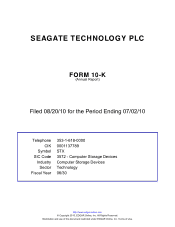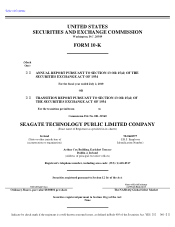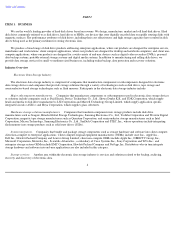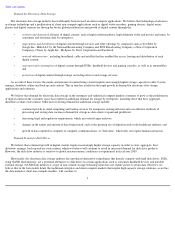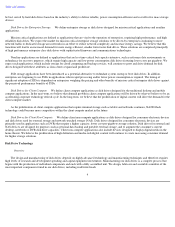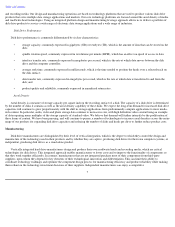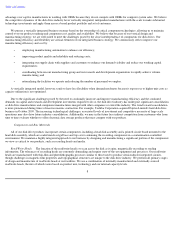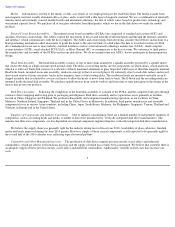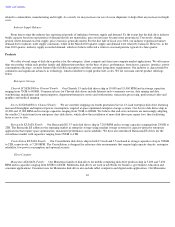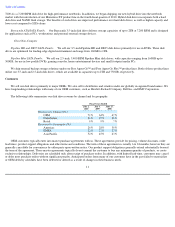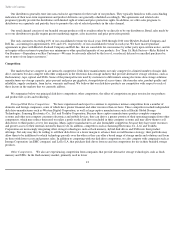Seagate 2009 Annual Report Download - page 7
Download and view the complete annual report
Please find page 7 of the 2009 Seagate annual report below. You can navigate through the pages in the report by either clicking on the pages listed below, or by using the keyword search tool below to find specific information within the annual report.
Table of Contents
Demand for Electronic Data Storage
The electronic data storage industry has traditionally been focused on client compute applications. We believe that technological advances
in storage technology and a proliferation of client non-compute applications such as digital video recorders, gaming devices, digital music
players and digital cameras are driving the broad, global proliferation and growth of digital content through the:
• creation and sharing of all types of digital content, such as high-
resolution photos, high definition video and movies and music by
consumers and electronic data by enterprises;
•
aggregation and distribution
of digital content through services and other offerings by companies such as YouTube by
Google Inc., Hulu LLC by the National Broadcasting Company and FOX Broadcasting Company (a News Corporation
Company), iTunes by Apple Inc., MySpace by News Corporation and Facebook;
•
network infrastructure
, including broadband, cable and satellite that has enabled the access, hosting and distribution of such
digital content;
• enjoyment and consumption of digital content through DVRs, handheld devices and gaming consoles, as well as in automobiles;
and
• protection of digital content through storage on backup devices and storage services.
As a result of these factors, the nature and amount of content being created requires increasingly higher storage capacity in order to store,
manage, distribute, utilize and back up such content. This in turn has resulted in the rapid growth in demand for electronic data storage
applications and solutions.
We believe that demand for electronic data storage in the enterprise and traditional compute markets continues to grow as the proliferation
of digital content in the consumer space has resulted in additional demand for storage by enterprises, including those that host, aggregate,
distribute or share such content. Other factors driving demand for additional storage include:
•
continued growth in cloud computing and backup services for enterprises seeking efficient and cost
-
effective methods of
processing and storing data, increases demand for storage as data centers expand and proliferate;
• increasing legal and regulatory requirements, which necessitate larger archives;
•
changes in the nature and amount of data being stored, such as the growing use of digital records in the healthcare industry; and
• growth in data captured in computer to computer communications, or "dark data", which does not require human interaction.
Demand Trends for Disk Drives
We believe that continued growth in digital content requires increasingly higher storage capacity in order to store, aggregate, host,
distribute, manage, back up and use such content, which we believe will continue to result in increased demand for disk drive products.
However, the disk drive industry is sensitive to global macroeconomic conditions as experienced in fiscal year 2009.
Historically, the electronic data storage industry has introduced alternative technologies that directly compete with hard disk drives. SSDs,
using NAND flash memory, are a potential alternative to disk drives in certain applications such as consumer handheld devices and portable
external storage. NAND flash memory is a type of non-volatile storage technology that does not require power to retain data. However, we
believe that in the foreseeable future the traditional enterprise and client compute markets that require high capacity storage solutions, as well as
the data intensive client non-compute markets, will continue to
5

